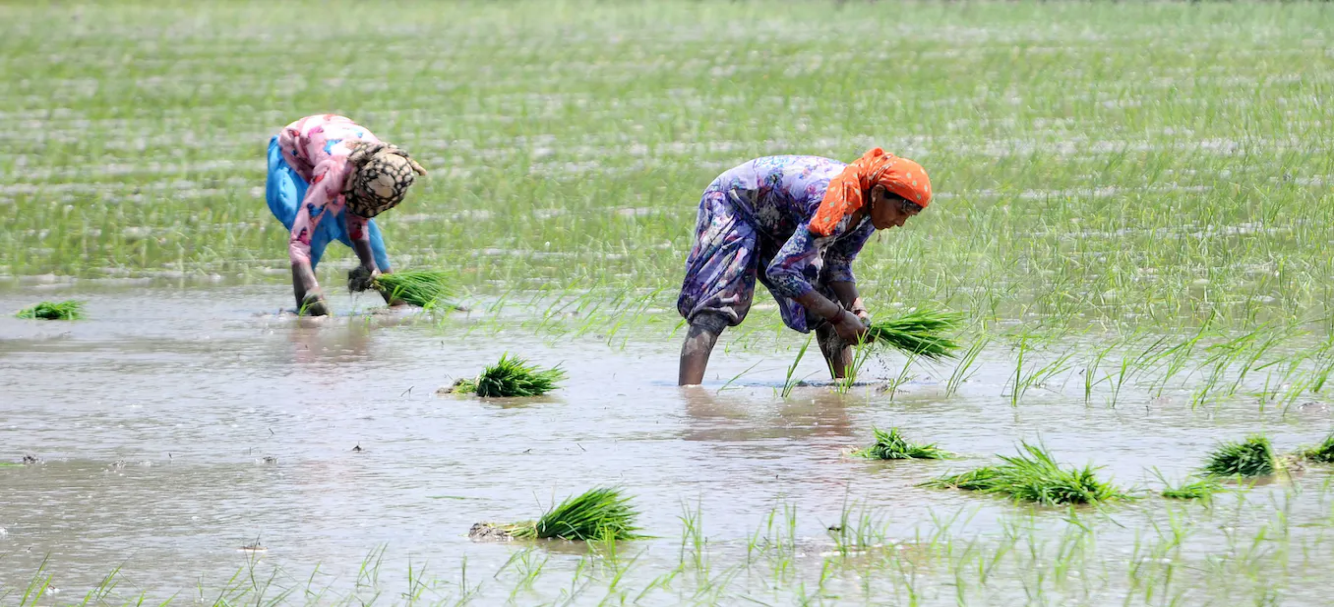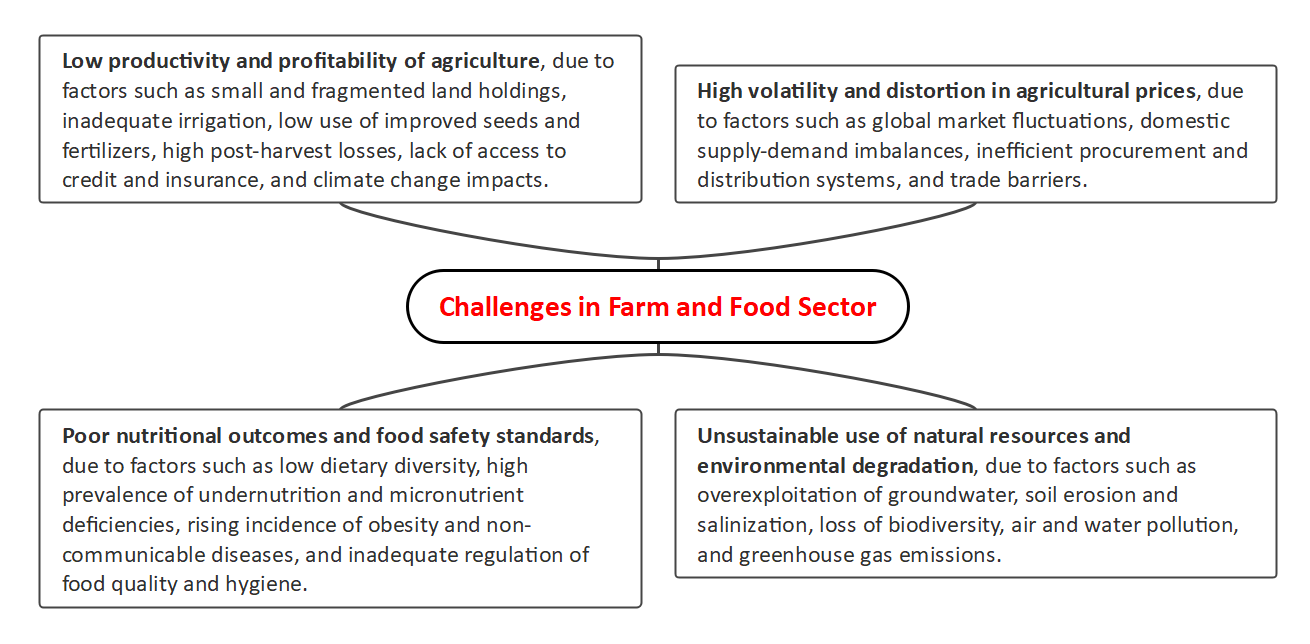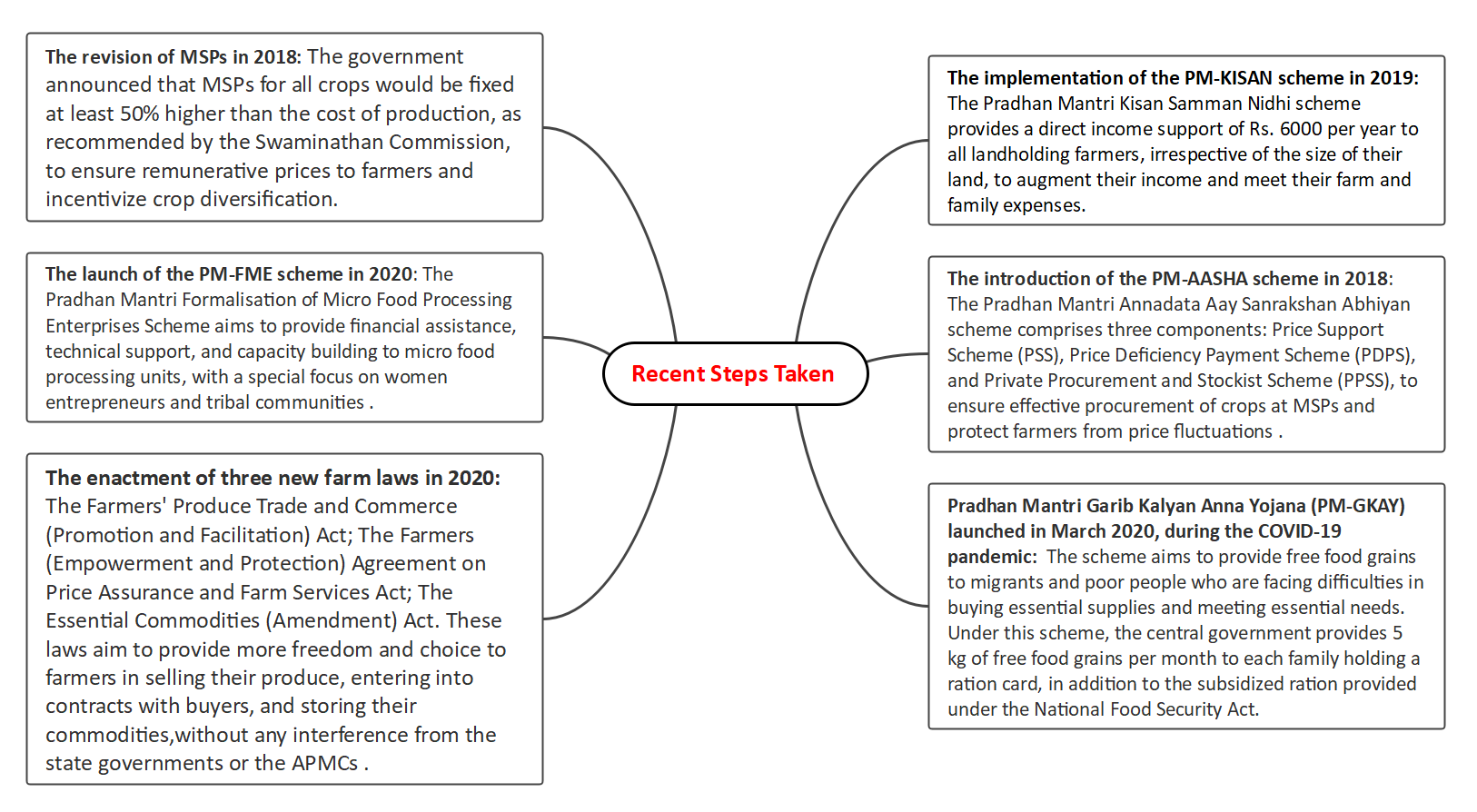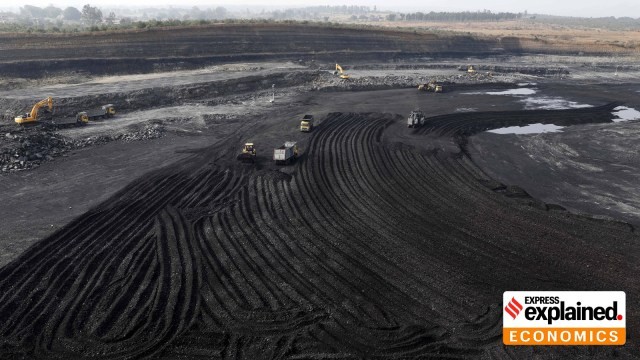Description

Copyright infringement not intended
Picture Courtesy: theconversation.com
Context: Over the past decade, the policy approach of the Union government toward farm and food issues has shifted notably, particularly in response to changing supply situations and inflation rates.
Key Highlights
Inflation Trends
- During 2014-2019, there was low inflation, with the general consumer price index (CPI) averaging 4.3% per year.
- In 2019-2023, there was a notable increase in inflation, with CPI averaging 5.8%, and consumer food price index (CFPI) inflation even higher at 6.4%.
- Food inflation exceeded general retail inflation in 25 out of 52 months during 2019-2023, compared to 20 out of 60 months in 2014-2019.
Policy Response in 2014-2019
- Surpluses and low prices characterized the period, leading to record procurement of rice and wheat at minimum support prices (MSP).
- The government increased food grain allocations under the public distribution system during the Covid-induced economic shock.
- Measures were taken to address excess sugar stocks, including incentives for exports and promoting ethanol production.
Farm Reforms in 2019-2023
- The surplus period led to the enactment of farm reform laws in June 2020, aiming to liberalize trade in agricultural produce and reduce the government's MSP procurement burden.
Shift in Policy Due to Rising Inflation
- Post Russia’s invasion of Ukraine in February 2022, food inflation increased, leading to a change in government priorities. Customs duties on crude palm, soybean, and sunflower oil were gradually reduced to nil.
- Import restrictions on pulses were eased, and duty-free imports of certain pulses were announced until March 31, 2025. The government prioritized consumer interests over producers.
Current Outlook and Restrictions
- Export bans/curbs were imposed on wheat, rice, sugar, onion, and de-oiled rice bran.
- Stock limits were implemented for wheat, arhar, and urad, contrary to the provisions in the Essential Commodities (Amendment) Act.
- With the changed supply situation from "surplus" to "tight," the farm laws were repealed in November 2021.
2024 Outlook
- The restrictions on exports and stock limits are likely to continue, if not intensify until the Lok Sabha polls scheduled in April-May 2024.
- The government aims to manage food inflation and ensure that food-related concerns do not dominate voters' perceptions.
Farm and Food Policy In India
- India is one of the largest and most diverse countries in the world, with a population of over 1.3 billion people and a land area of 3.3 million square kilometres.
- Agriculture is the primary source of livelihood for about 58% of the population and contributes about 16% to the gross domestic product (GDP).
- India is a major producer and consumer of food, with a foodgrain production of 303.4 million tonnes in 2019-20 and a food demand projected to reach 355 million tonnes by 2033.
However, despite its achievements in food security and agricultural growth, India faces many challenges in its farm and food sector. Some of these challenges are:

Policies and programs adopted to improve the performance and sustainability of its farm and food sector
- Farm support policies, such as minimum support prices (MSPs), input subsidies, crop insurance, direct income support (PM-KISAN), etc., provide income stability and risk mitigation to farmers.
- Food security policies, such as the public distribution system (PDS), the National Food Security Act (NFSA), the mid-day meal scheme (MDMS), etc., to provide subsidized food grains and cooked meals to the poor and vulnerable sections of the population.
- Agricultural trade policies, such as import tariffs, export restrictions, free trade agreements (FTAs), etc., protect domestic producers from international competition and ensure food self-sufficiency.
- Agricultural research and extension policies, such as the Indian Council of Agricultural Research (ICAR), the Krishi Vigyan Kendras (KVKs), the National Agricultural Research System (NARS), etc., to generate and disseminate new technologies and innovations for enhancing agricultural productivity and quality.
- Agricultural marketing policies, such as the Agricultural Produce Market Committees (APMCs), the Essential Commodities Act (ECA), the e-National Agriculture Market (e-NAM), etc., regulate the sale and purchase of agricultural commodities and facilitate their movement across states.
- Food processing policies, such as the Mega Food Parks Scheme (MFPS), the Pradhan Mantri Kisan Sampada Yojana (PMKSY), the Agro Processing Clusters Scheme (APCS), etc., to promote value addition, reduce wastage, create employment, and increase farmers' income.
- Food safety policies, such as the Food Safety and Standards Authority of India (FSSAI), the Integrated Food Safety Scheme (IFSS), etc., ensure compliance with food quality norms and standards across the food value chain.

Way forward
- Addressing the concerns and grievances of the farmers, traders, consumers, and other stakeholders, through dialogue, consultation, and consensus-building.
- Enhancing the efficiency and transparency of the MSP and PDS systems, by using digital technologies, such as Aadhaar authentication, direct benefit transfer (DBT), online procurement, etc., to reduce leakages, corruption, and diversion of funds and foodgrains.
- Promoting diversification and value addition in agriculture, by encouraging the cultivation of high-value crops, such as fruits, vegetables, oilseeds, pulses, etc., and supporting the development of agro-processing industries, especially in rural areas.
- Improving the quality and safety of food products, by enforcing strict compliance with food standards and regulations, strengthening the testing and certification infrastructure, creating awareness among consumers and producers, and incentivizing good practices.
- Adopting a holistic and integrated approach to food security and nutrition security, by addressing the multiple dimensions of hunger, malnutrition, obesity, and diseases, through a combination of food-based interventions, such as biofortification, fortification, supplementation, etc., and non-food interventions, such as health, sanitation, education, gender empowerment, etc.
- Adopting a sustainable and climate-resilient approach to agriculture, by promoting the conservation and efficient use of natural resources, such as water, soil, energy, etc., adopting climate-smart practices, such as organic farming, precision agriculture, agroforestry, etc., enhancing the adaptive capacity and mitigation potential of farmers and agro-ecosystems.
.jpg)
Conclusion
- India's farm and food policy has evolved to meet the changing needs and challenges of its farm and food sector. India has achieved remarkable success in ensuring food security and agricultural growth but also faces many challenges in enhancing productivity and profitability, improving nutritional outcomes and food safety standards, and ensuring sustainability and environmental protection. India needs to continue its reform and innovation efforts to make its farm and food policy more responsive and effective in achieving its goals of farmer welfare, consumer welfare, industry welfare, and societal welfare.
Must Read Articles:
Global Food Policy Report 2023: https://www.iasgyan.in/daily-current-affairs/global-food-policy-report-2023
Regional Overview Of Food Security And Nutrition 2023: Statistics And Trends: https://www.iasgyan.in/daily-current-affairs/regional-overview-of-food-security-and-nutrition-2023-statistics-and-trends
|
PRACTICE QUESTION
Q. How is India addressing the challenges of ensuring food security for its vast population amidst evolving agricultural practices, changing climate conditions, and socio-economic factors?
|










